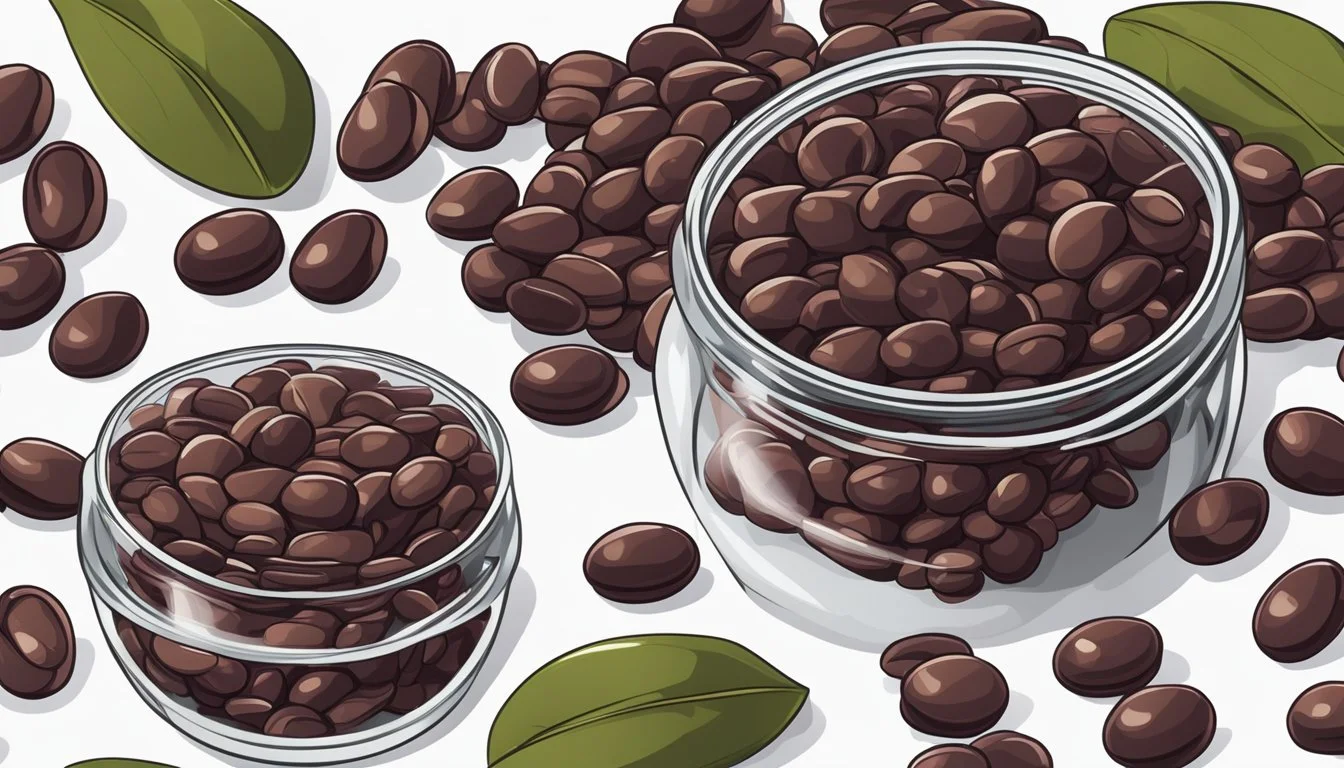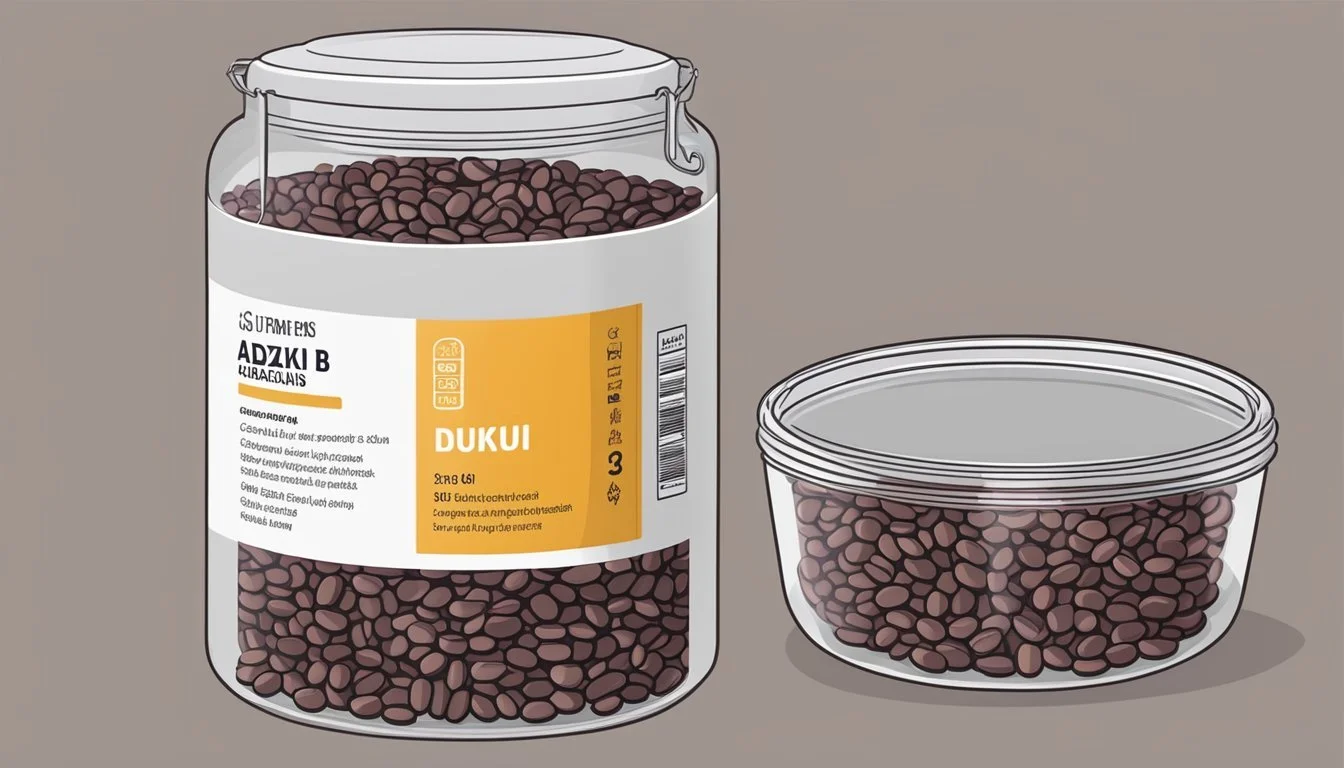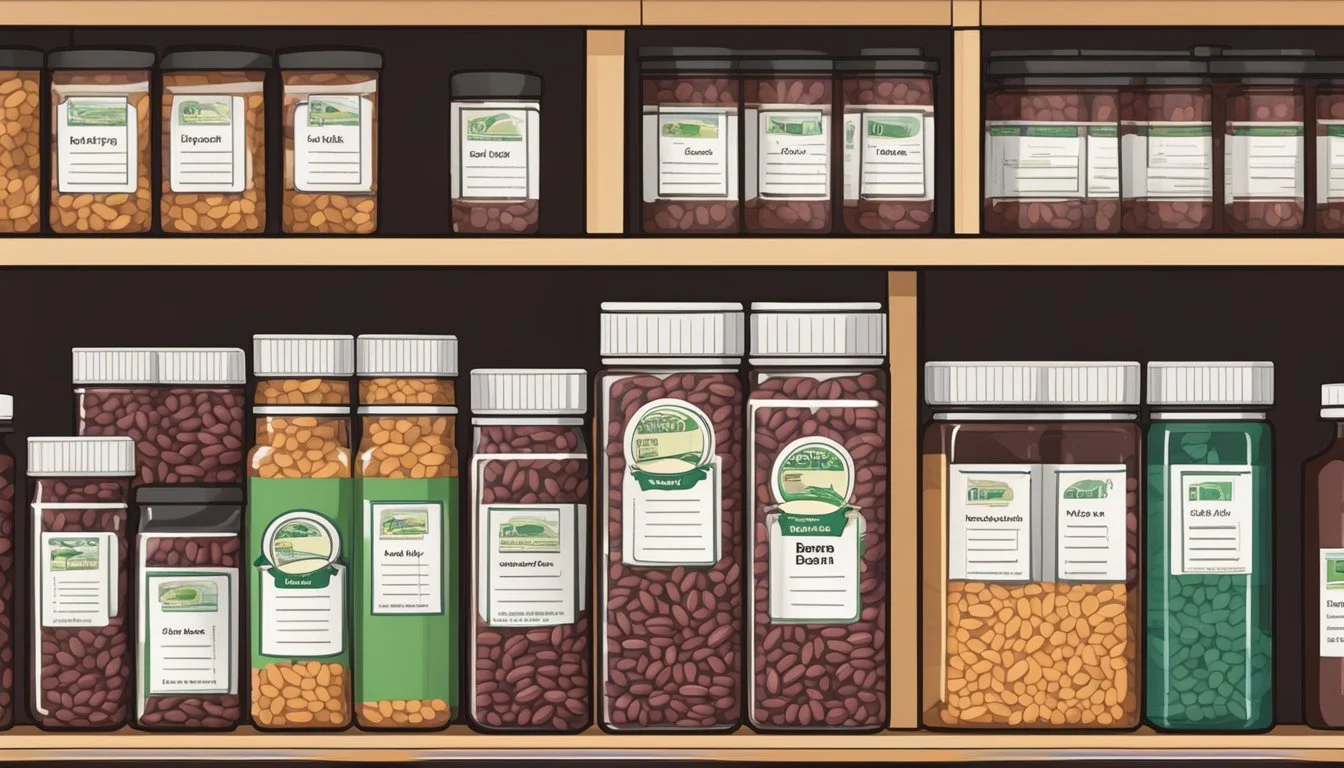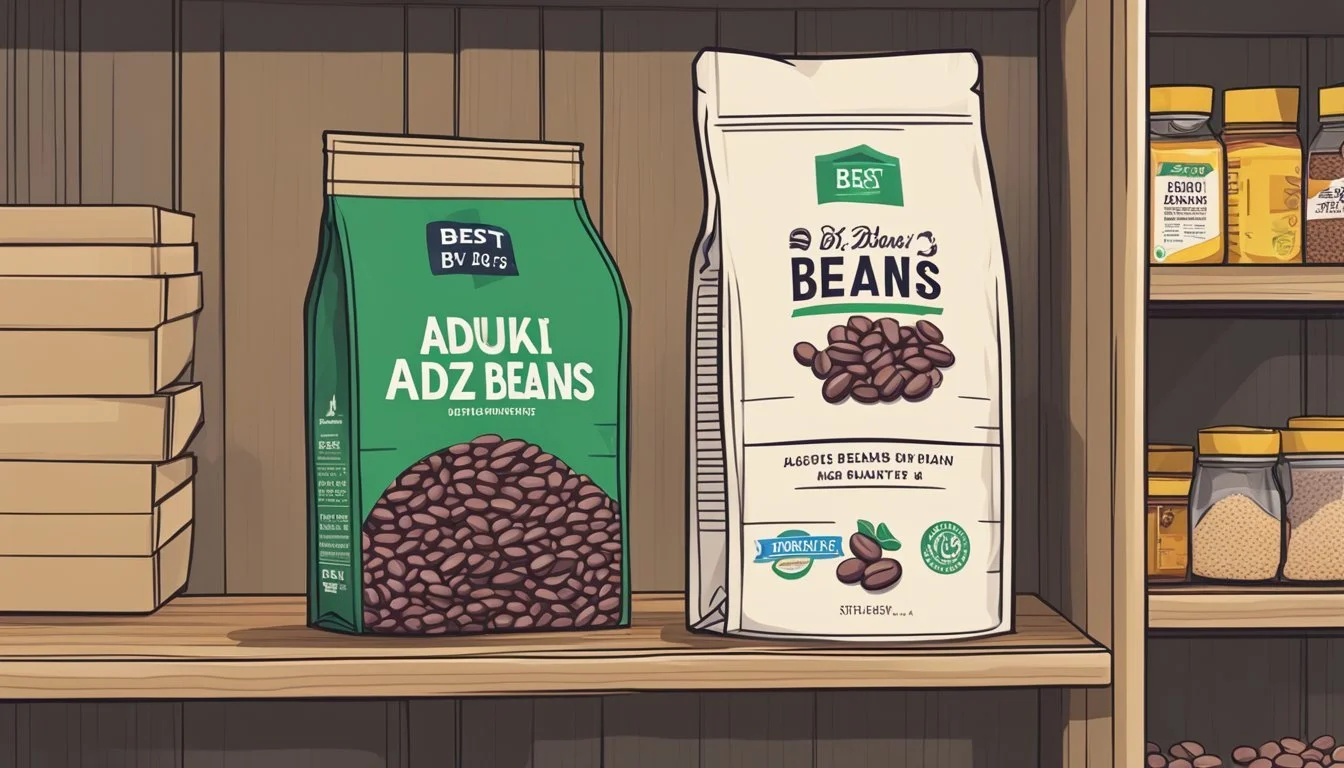How Long Do Adzuki Beans Last?
Shelf Life and Storage Tips
Adzuki beans, small and red legumes, are a staple in East Asian and Himalayan cuisine known for their sweet nutty flavor and versatility in both savory and sweet dishes. Shelf life is an important consideration for cooks and consumers, given that proper storage can vastly extend the usability of these beans. When stored correctly in a dry, cool place, dried adzuki beans can maintain their quality for years.
The longevity of dried adzuki beans makes them an excellent addition to long-term food storage plans. Sealed effectively in airtight containers, such as #10 cans or Mylar bags with oxygen absorbers, their shelf life can extend up to 30 years. This remarkable duration is due to their low moisture content and the preservation methods used, which keep the beans in a stable state suitable for future use.
Adzuki Beans Overview
Adzuki beans, known as azuki or aduki, are small red legumes that play a significant role in East Asian cuisine and are celebrated for their nutritional value.
Cultural Significance in Asia
In Asia, particularly in Japan and China, adzuki beans have been an integral part of diets and traditional practices for centuries. They are frequently used in sweet red bean paste (how long does red bean paste last?), a key ingredient in many Asian desserts. Adzuki beans are also utilized within Traditional Chinese Medicine for their believed health properties.
Nutritional Profile
Adzuki beans are a powerhouse of essential nutrients. They boast a high protein content and are rich in dietary fiber, which aids in digestion. Here is a tabulated breakdown of their key nutritional components:
Nutrient Benefit Protein Important for muscle repair and growth Fiber Promotes digestive health Iron Crucial for oxygen transport and energy production Magnesium Supports bone health and muscle function Potassium Aids in maintaining healthy blood pressure Manganese Involved in bone formation and nutrient metabolism Copper Necessary for iron metabolism and maintenance of heart health Vitamins B vitamins such as folate are present, supporting various body functions Antioxidants Help protect cells from damage
These beans are also a good source of other minerals such as zinc, phosphorous, and calcium. With their high soluble fiber content, they can help in regulating blood sugar levels, contributing to their value in a balanced diet.
Storage Methods
The longevity of adzuki beans is significantly influenced by storage methods, which involve optimal conditions, understanding their shelf life, proper preservation after cooking, and recognizing signs of spoilage.
Ideal Storage Conditions for Adzuki Beans
Dried adzuki beans should be stored in a pantry away from light and heat. They are best kept in airtight containers to protect against moisture and pests. The storage environment should be cool and dry to ensure the beans maintain their quality.
Shelf Life of Dried Adzuki Beans
The shelf life of properly stored, dried adzuki beans in a pantry can last up to 1 year without losing quality. When sealed in airtight containers such as #10 cans or Mylar bags and kept in ideal conditions, their shelf life can extend up to 30 years.
Preserving Cooked Adzuki Beans
Once adzuki beans are cooked, they should be stored in the fridge in an airtight container where they can last for up to 5 days. For longer storage, cooked adzuki beans can be frozen where they will remain of good quality for up to 6 months.
Signs of Spoilage in Adzuki Beans
Spoilage in adzuki beans is evidenced by a musty smell, discoloration, or the presence of mold or bacteria. If the beans are slimy or have an off odor, they should not be consumed. Dried beans that are very hard and do not soften during cooking may also be past their prime.
Culinary Uses
Adzuki beans offer a unique versatility in cooking, serving as the foundation for both traditional dishes and innovative culinary creations. They can be easily integrated into a variety of recipes, from hearty stews to delicate desserts.
Traditional Dishes and Desserts
Adzuki beans are a staple in East Asian cuisines, particularly in traditional dishes and desserts. They are frequently boiled with sugar to create a sweet red bean paste, an essential ingredient in numerous Asian confections. Here's how adzuki beans are utilized in classic recipes:
Japanese Pastries and Sweets: Red bean paste features prominently in pastries like dorayaki (sweet pancakes), and in mochi (rice cake) fillings.
Chinese Desserts: The paste is also used in mooncakes, dumplings, and steamed buns.
Korean Dishes: In Korea, adzuki beans are used to make a sweetened soup known as patjuk, traditionally consumed during the winter.
Modern Recipes and Adaptations
Beyond traditional uses, adzuki beans have found their way into modern kitchens where they replace or complement ingredients in familiar recipes. Compared to kidney beans (how long do kidney beans last?), black beans (how long do black beans last?), or chickpeas, adzuki beans often require a shorter cooking time, making them convenient for a variety of dishes. They're employed across diverse recipes:
Salads and Grain Bowls: Adzuki beans are a nutritious addition to salads and grain bowls, adding both color and protein.
Vegetarian Options: Their firm texture and rich flavor make them ideal for veggie burgers and as fillers in meatless chili or curry.
Modern Desserts: Chefs are incorporating adzuki beans into western-style cakes and ice cream to add a twist of Asian flair.
Health-Conscious Creations: In health-focused dishes, they're seen in stews, soups, and even as a base for tea due to their nutritional benefits.
Health Implications
Benefits of Adzuki Beans in Diet
Adzuki beans are a robust source of nutrients vital for the overall health. These small, reddish beans are packed with protein and dietary fiber, essential for maintaining muscle health and aiding in digestion. The beans are also enriched with minerals like magnesium and calcium, which play a role in bone density and heart health. Additionally, the inclusion of adzuki beans in the diet may contribute to weight loss due to their low fat content and high fiber, which can provide a feeling of fullness.
Impact on Blood Pressure and Cholesterol
Adzuki beans have notable effects on blood pressure and cholesterol levels. They contain bioactive compounds that can help reduce hypertension, a major risk factor for heart disease. The fiber in adzuki beans also aids in the reduction of cholesterol levels, supporting cardiovascular health. Regular consumption of these beans may lead to improved heart health and a lower risk of chronic diseases such as heart disease.
Buying and Preparing Adzuki Beans
When it comes to adzuki beans, purchasing high-quality beans and preparing them correctly can significantly enhance their flavor and cooking outcomes. This section will guide readers through selecting the best adzuki beans, preparing them for cooking, and understanding the cooking times and techniques that work best for these beans.
Purchasing and Selecting Quality Beans
One should purchase adzuki beans from reputable grocery stores or online platforms such as Amazon, ensuring the legumes are free from stones and debris. Look for consistent size and color as indicators of quality. Avoid beans that appear shriveled or have visible mold or damage.
Preparation Prior to Cooking
Before cooking adzuki beans, they should be rinsed thoroughly in cold water using a mesh strainer to remove any remaining debris. Sorting the beans is also important; it is advisable to discard any stones, misshapen, or discolored beans that were missed during packaging.
Cooking Techniques and Times
Adzuki beans can be cooked in various ways, including stovetop simmering and using a pressure cooker. For stovetop cooking, no pre-soaking is required, and beans typically cook in about 60 minutes. In an Instant Pot or other pressure cookers, adzuki beans can be cooked on high pressure for a shorter time, often around 20 to 25 minutes, yielding tender beans suitable for both sweet and savory dishes. Whether used in conjunction with carrots in a stew or prepared as the star of a dish, the beans should be cooked until fork-tender.
Adzuki Beans in Diets and Nutrition Plans
Adzuki beans are a nutrient-dense legume that serve as a versatile component in various dietary plans. They are revered for their high protein and fiber content, playing a significant role in both macrobiotic and plant-based diets.
Role in Macrobiotic Diet
In the macrobiotic diet, adzuki beans are esteemed for their balance between yin and yang properties, promoting both health and longevity. They are considered a staple due to their ability to offer sustenance while also supporting the body's natural healing through their nutritious profile. Their low glycemic index complements the macrobiotic emphasis on whole grains and vegetables, contributing to stable blood sugar levels.
Inclusion in Plant-Based Diets
Adzuki beans are a beneficial addition to plant-based diets, providing a substantial amount of plant-based protein which is crucial for those excluding animal products. They can easily be incorporated into meals as a primary protein source, ensuring that individuals meet their protein needs without the inclusion of meat or dairy.
Contribution to Daily Fiber Intake
One of the standout features of adzuki beans is their high dietary fiber content. An average serving contributes significantly towards the daily recommended fiber intake. The fiber found in adzuki beans supports digestive health and can aid in maintaining a healthy weight by promoting a feeling of fullness. This makes them an excellent choice for diet plans focused on weight management and digestive well-being.
Additional Information
This section provides a detailed perspective on adzuki beans' longevity compared to other legumes and insights from academic research.
Comparative Study with Other Legumes
Adzuki beans have a notable shelf life that varies depending on storage conditions. When stored properly in a cool, dry place, adzuki beans can maintain their quality for up to one year. A study by Utah State University highlights that proper storage is key for legumes:
Adzuki Beans: 1 year
Kidney Beans: 1-2 years
Chickpeas: 2 years
Black Beans: 1-2 years
These figures reflect the beans in their dried, uncooked form, properly packaged and kept away from direct sunlight and moisture.
Academic Research and Studies
Research indicates that adzuki beans not only have a long shelf life but also possess nutritional benefits that can be diminished if improperly soaked or cooked. Academic studies emphasize that soaking beans overnight and changing the water before cooking can optimize both texture and flavor, thereby retaining the beans' inherent qualities. Additionally, researchers suggest minimal soaking times to prevent loss of nutrients, with time frames ranging from as little as four hours to a maximum of 12 hours for optimal results.
FAQs
In this section, we provide answers to common questions about adzuki beans, offering tips and techniques for enhancing flavor, preparing adzuki bean bowls, and serving savory dishes.
How to Enhance Flavor
To enrich the nutty flavor of adzuki beans, one can incorporate aromatic additions. A pinch of salt during the cooking process enhances taste significantly. Adding a couple of bay leaves to the pot infuses a subtle depth to the beans' earthy tones.
Tips for Making Adzuki Bean Bowls
For crafting the perfect adzuki bean bowl, it's crucial to achieve a balance of textures and tastes. Here's a brief guide:
Texture: Ensure the beans are thoroughly cooked until tender, yet still hold their shape for a satisfying bite.
Balance: Combine with grains like quinoa or rice, adding crunch with vegetables or seeds.
Serving Suggestions for Savory Dishes
Adzuki beans lend themselves to a variety of savory dishes. They can be the main protein in a vegan dish or an accompaniment to meat. Here are serving suggestions:
Side Dish: A simple yet delicious side dish can be made by sautéing cooked adzuki beans with garlic, onion, and a mix of your favorite herbs.
Main Course: Mash adzuki beans for a burger patty or mix into a hearty stew to provide a substantial, protein-rich main course.
Conclusion
When properly stored, dried adzuki beans can remain edible and retain their quality for an extensive period. Packaging in #10 cans or Mylar bags with oxygen absorbers extends their shelf life significantly. It's recommended to keep them in a cool, dry environment to ensure longevity.
Shelf Life
Room Temperature (Pantry): Usually lasts up to 1-2 years.
Optimal Conditions (Cool, Dry Place): Can extend beyond 2 years.
Mylar with Oxygen Absorbers: May last for 20 to 30 years.
Factors influencing the shelf life include:
Packaging: Airtight and moisture-proof materials are ideal.
Temperature: Cooler temperatures extend shelf life.
Humidity: Low humidity levels help prevent mold growth and preserve quality.
Quality Maintenance
To maintain the quality of adzuki beans:
Store them in a dark location away from sunlight.
Use an airtight container to protect against pests and moisture.
Check periodically for signs of spoilage such as a musty smell or pest infestation.
Adzuki beans are a versatile and nutritious ingredient. Ensuring their longevity helps not just in reducing food waste but also in maintaining a ready supply for various culinary needs.











